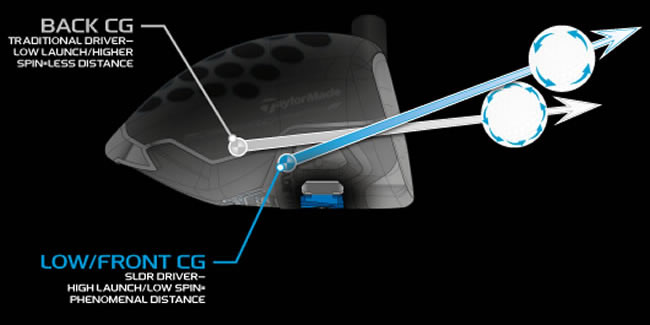A key phrase you will encounter when reading about golf club design is Centre of Gravity (CG).
What is Centre of Gravity?
CG stands for centre of gravity and in a golf club head it is the point that all of the weight is acting through. If you drew a line through all the different vertical and horizontal balance points of the club then the intersection of all those lines is the centre of gravity.
Why is Centre of Gravity important for golfers?
CG is one of the hottest topics in the equipment world as it bestows many of the flight characteristics of the golf ball from the club.
A low centre of gravity produces lower backspin and higher launch conditions whilst a higher centre of gravity produces the opposite effect.
CG can also be controlled from left to right, so if it is closer to the heel of the club it produces more draw spin which is good for countering slices which a lot of players struggle with.
CG can also be moved vertically as well as forward and backward in the club head with a low-forward position decreasing the amount of spin.

Is there an ideal position for Centre of Gravity?
This really depends on the club designer and what they are hoping to achieve with the performance of the club and the type of golfer they are designing it for.
How is Centre of Gravity changed?
The CG is manipulated by moving weight within the club head. When manufacturers design golf clubs they determine who the club is aimed at and using data from testing position the weight in the most advantageous position for that player. For example moving the weight towards the heel promotes a draw spin and counteracts slices.
Some clubs allow the golfer to move this weight around for themselves either left to right (see below) or in some cases vertically within the club head.

Adjustable golf clubs such as drivers and fairway woods tend to have a higher centre of gravity due to the larger hosel area. To counteract this designer’s can slope the crown downwards or add discretionary weighting on the sole.